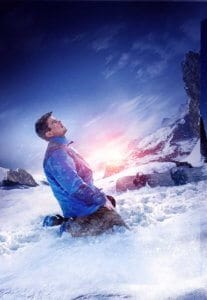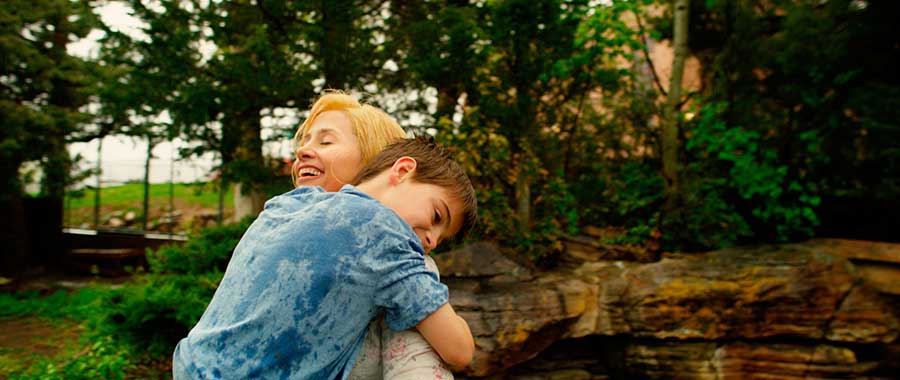The real events of the film “6 Below: Miracle on the Mountain” show part of the life of the snowboarder and Olympic hockey player Eric LeMarque, who spent 8 days in the fierce cold of the Sierra Nevada mountain range. He drank his urine, and according to the script, ate pieces of his own skin and fought with wolves. And all this records a long fall and a too cruel rehabilitation from drug addiction. In other words, a second chance.
The Plot Is Distorted but not Spoiled
Today, Eric LeMarque has written several bestsellers and has become the hero of the film “6 Below: Miracle on the Mountain”, directed by Scott Waugh (“Need for Speed”). The film is both a thriller and a drama, based on real events; although, when compared with the documentary facts, the departure from reality is only the name of Eric LeMarque (Josh Hartnett), his past and present, his 8 days in the imprisonment of crystal clear snow being real.
According to the plot, Eric is overtaken by drug addiction as a result of which he becomes the culprit of an accident and ends up in court cases. In the past, he was a talented, gifted hockey player who abandoned a fantastic career. He showed character and, because of obstinacy, gave up sports. By the imperatives of chance and by his own lack of will, he uses methamphetamines, and is fond of alcohol and late-night parties. Before an important court meeting, Eric goes to the camp at the base of the Sierra Nevada mountain range to ride his snowboard. There, he uses cocaine and goes snowboarding. And these are the most active times in his schedule, according to the plot.
On a fateful day, he takes a dose and rides the cable car up the slope. Despite the negative warnings of weather forecasters, he is not deterred by the possibility of foggy clouds that will become a mountain milk shroud. Equipped with a music player, a radio, and a cellphone, he rides up Dragon Spin Mountain to roll onto the ridge. The mountain guard had announced earlier that the mountain would be closed due to the threat of stormy weather. But the warning comes too late for Eric. Snowboarding along, kilometer by kilometer, Eric distances himself from the base, not even considering how far he might have to go.
How to Survive in the Mountains in Winter
Passing the Dragon’s Back, the road leads into the depths of the forest, away from the base rather than towards it. Eric, not yet realizing this, zealously dissects the slopes until visibility vanishes. And Eric is suffering from an old leg injury, so walking is more painful than it would be for most people, making it hard for him to stand on the board. When he discovers that he is lost, it is already past noon and, in fact, little time remains before sunset. Eric decides to head west to find the mountain road and get back to base that way. But while we, the audience, can see the map accurately, Eric still does not realize that he is going the wrong direction.

As he wanders, evening comes, and it becomes necessary to look for a place to camp over night. Suddenly, among the trees, he notices the silhouettes of dogs who are emitting ferocious growls. Wolves are on a night hunt. They sniff at the human prey. Eric understands that it is necessary to act and begins to yell like crazy. The wolves begin to howl, inviting the pack, while Eric has the opportunity to escape. He chooses a secluded place and digs a hole. He sleeps in a ravine, hiding behind a snowboard.
The next day, Eric continues his journey and finds a place with water. Here there are discrepancies between the film and the real story. In the film, Eric tries to take a dose of cocaine and falls through the ice. Here, a scene is reproduced in a few seconds – an illusion of how drugs are destroying him, although this is a pretty controversial moment.
The Sierra-Nevada Mountain Park
But you can see the connections in the episode when the bag of powder is drowning, and Eric follows, almost drowning himself – in cold water with a crust of ice above. An abstraction of how drugs take people to the bottom, as well as the strength of addicts’ attachment to the drugs they are hooked on. So in the real story, Eric comes to the river and begins to drink water eagerly. A slippery and unsteady island of frozen land collapses. He begins to freeze and miraculously makes his way to land. He has to take off his wet clothes and dry them on mountain stones, and then sleeps in the shelter of boulders, where there is no strong wind. Nevertheless, his legs begin to freeze, and he must peel away pieces of his skin after taking off his socks.
The next day, Eric makes his way to Mount Executioner – a place that professional snowboarders fear. The fact is that the surface of the mountain is rocky, with hollows where there is a lot of snow, and sharp turns with a high risk of injuries and bruises. But the biggest danger is the cliff at the end of the path, which forms a waterfall in the summer. Eric manages to quickly break his descent and clutches the limb of a spruce, which holds his body against the power of inertia.
Another issue is water and food in the mountain, where snow is everywhere and his matches are damp. In fact, Eric reported in a documentary that he drank urine. According to the plot, he melts the snow. He also eats pieces of skin that come off the wound on his leg. During his stay without food and water, he loses weight. But the magic is that he still rides the board until his legs are paralysed from the cold.
In the end, Eric uses his radio as a compass and manages to get to the top of the mountain via radio frequencies. The police search for Eric, and a patrol scours the area. One of the officers, along with an assistant, finds a single board rut. Following the trail, he finds the place where Eric spent the night, and thus it becomes clear to him that Eric is alive, and the search must be reinforced.
Eric is found on a ridge, suffering from frostbitten limbs. He is now forced to wear dentures. But a year after the event, he gets on the board exactly in the place where he began his fateful journey – in the Sierra-Nevada mountain park.
Why Does the Film Tell a Weaker Story than the Real Event?
The opinion is subjective but interesting. I believe that the film does not tell the whole story. There are too few flashbacks, and if there are any, then they are played in a stretch. All emphasis is on drugs and family relationships, symbolized by the hopelessness of the present. Although the drama of the film is understandable, it is not an easy task to show the whole life and all the emotions of the hero in an hour and a half.

Therefore, we see sinking cocaine and diseased flesh and the transformation of the hero at the finale. All those things can be explained by only one, salient fact – the second chance to rise from the bottom of life is incredibly complex and valuable. And to survive in the snowy mountains is virtually impossible. Well, if only because in the jungle there are branches and dry leaves, and in the mountains, there are only damp matches and snow. The conditions are very limited. So to lose two legs but to save one’s life is the best gift that nature has offered to Eric.
Well, breaking down after refusing cocaine – at this temperature, drug withdrawal symptoms are not felt, but only emotional upset. Well, there’s no telling how things play out in such conditions, it just turns out the way it turns out!
Photos: MovieStillsDB
Read more movie reviews from the author:
Support us!
All your donations will be used to pay the magazine’s journalists and to support the ongoing costs of maintaining the site.
Share this post
Interested in co-operating with us?
We are open to co-operation from writers and businesses alike. You can reach us on our email at [email protected]/[email protected] and we will get back to you as quick as we can.









